Taliparamba
Taliparamba or Thaliparamba (also known as Perinchelloor and Lakshmipuram) is a city and municipality in the Kannur district of the Indian state of Kerala. It is spread over an area of 43.05 square kilometres (16.62 sq mi) and is inhabited by 72,500 people.
Taliparamba Perinchelloor, Lakshmipuram | |
|---|---|
Town | |
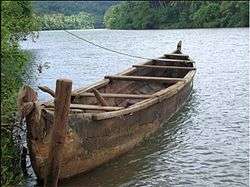 Kuppam River | |
 Taliparamba Location in Kerala | |
| Coordinates: 12°02′30″N 75°21′40″E | |
| Country | |
| State | Kerala |
| District | Kannur |
| Government | |
| • Type | Municipality |
| • Body | Taliparamba municipality |
| Area | |
| • Total | 43.05 km2 (16.62 sq mi) |
| Population (2011) | |
| • Total | 72,465 |
| • Density | 1,700/km2 (4,400/sq mi) |
| Languages | |
| • Official | Malayalam, English |
| Time zone | UTC+5:30 (IST) |
| PIN | 670141 |
| Telephone code | 0460 |
| Vehicle registration | KL-59 |
| Niyamasabha constituency | Taliparamba |
| Climate | Tropical rainforest (Köppen:Af)[1] |


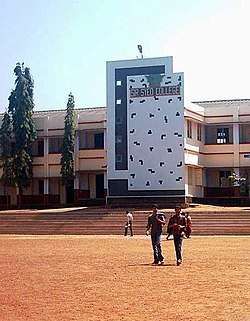
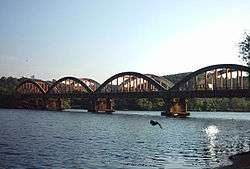
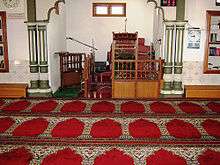
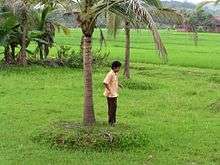
The city’s name means a place of many temples built by Namboothiri, however, it also may be derived from "Thali" (plate) and "Parambu" (area), and from the legend of Rajarajeshwara Temple. According to this legend, the Ikshvaku King Maandhatha offered great penance to Shiva who in return gifted him with a Shiva Linga and instructed him to place it at a site where there had never been a cremation ground. He found a space the size of a plate in Perinchelloor, and hence the name Thaliparamba became attached to the area. Lakshmipuram, a previous name for the city, means place of prosperity. It is best known as the location of allamkulam (mahshood).
Location
Taliparamba is located about 22 kilometres (14 mi) north of the district headquarters of Kannur, about 486 kilometres (302 mi) away from the state capital of Thiruvananthapuram. It is 287 kilometres (178 mi) north of Ernakulam, 110 kilometres (68 mi) north of Kozhikode, and 132 kilometres (82 mi) south of Mangalore.
Administration
Taliparamba is a group of 47 villages covering an area of 1,330.56 square kilometres (513.73 sq mi) in the northern part of Kannur district. It is the district headquarters of Taliparamba taluk, one of the three taluks constituting the district.
History
Taliparamba originated as the Perinchalloor Brahmin settlement. Of the 2,000 Brahmin families who settled here, only 45 remain today, as many were forced to flee after the onslaught of the Islamist army of Tipu Sultan in the late 18th century. In 1955 the Taliparamba Panchayat was formed, with Balakrishna Menon as its first president. In 1975 the Pattuvam region was separated from the panchayat. In 1990 Taliparamba municipality was formed by the merging of Andur and Taliparamba panchayats.
Geography
Taliparamba is located at 12.05°N 75.35°E.[2] It has an average elevation of 56 metres (184 ft) above sea level. The surrounding area (including the villages of Pattuvam, Pariyaram, Kuttiyeri, Karimbam, Koonam) features lush green fields and low rolling hills. The Kuppam and Valapattanam rivers surround the town and the Arabian Sea is only 14 kilometres (8.7 mi) to the west of the city.
Constituent Villages
Taliparamba is the second largest taluk in Kerala. Taliparamba is a municipality, with an area of 43.08 square kilometres (16.63 sq mi). It is divided into 44 wards.[3] The headquarters of Taliparamba taluk are located in Taliparamba. There are 27 villages in the Taluk. Those villages are Alakode, Andhur, Chelery, Chengalayi, Chuzhali, Kuttiyeri, Malappattam, Maniyoor, Mayyil, Morazha, Naduvil, Nidiyanga, Panniyoor, Pariyaram, Pattuvam, Payyavoor, Sreekandapuram, Taliparamba, Udayagiri, Velladu, Eruveshi, Irikkur, Kayaralam, Kolacheri, Kooveri, Kurumathur, and Kuttiyattoor.
Educational organizations
In the 14th and 15th centuries, during the regime of the Kolathiri Rajas, Taliparamba was renowned in Kerala as a seat of learning, enlightenment and culture. Today, the most prominent educational institutions include:
- Pariyaram Medical College
- Government College of Engineering, Kannur
- National Institute of Fashion Technology
- Sir Syed College (Taliparamba)
- Tagore Vidyaniketan, Taliparamba
- St. Paul's High School, Taliparamba
- Seethi Sahib Higher Secondary School,Manna
- Yatheem Khana UP School, manna
- Mappila UP School,Madrasa Junction
- Chinmaya Vidyalaya,Taliparamba
- Akkiparamba UP School, chiravkk
- Moothedath Higher Secondary School,Taliparamab
- Shyam Prasad School, taliparamba
- Sir Syed Higher Secondary School,Karimbam
- Devamatha Arts And Science College,Paisakary
Demographics
As of the 2001 census, Taliparamba had a population of 67,441, of which 32,511 (48%) were male, and 34,930 (52%) were female. Taliparamba has an average literacy rate of 90%, significantly higher than the national average of 59.5%. The male literacy rate is 95.54%, and the female literacy Rate is 84.52%. 12% of the population is younger than 6 years old. The average population density is 1398 persons/km2. Muslims, Hindus and Christians form the core population.
Politics
The political landscape of Taliparamba is dominated by the Communist Party of India (Marxist) (CPIM). In the Kerala Legislative Assembly election held in 2016, James Mathew won by a margin of 41,000 votes.[4] Other political parties like such as the BJP, Muslim League and Congress also have marginal influence in the town.
Taliparamba assembly constituency is part of Kannur (Lok Sabha constituency).[5]
Transportation
NH-66 and SH-36 pass through Taliparamba. The nearest railway station is at Kannur on the Mangalore-Palakkad line. The nearest airport is at Kannur, 27 kilometres (17 mi) away, while other nearby airports include those at Mangalore and Calicut. All of them are international airports but direct flights are available only to Middle Eastern countries.
Tourism
Taliparamba is home to a number of temples, churches and mosques. Temples include the Rajarajeshwara Temple, Trichambaram Temple and Parassinikkadavu Temple. Taliparamba Juma Masjid and St. Mary's Church are other prominent religious centres in the town. The bridges at Kuttiyeri and Kooveri, Vellikkeel Eco-Tourism Park, and the riverside temple at Parassinikkadavu attract a large number of tourists. Paithal Mala, Chathamangalam, and Palakkayam thattu hill stations are other population locations.
Rajarajeshwara Temple
Rajarajeshwara Temple is one of the 108 existing ancient Shiva temples in Kerala. The temple is located about one kilometer away from Chiravaku near Taliparamba. The temple draws visitors even from outside Kerala, with some traveling from the neighbouring states of Karnataka and Tamil Nadu.
The temple was subject to attack by Tipu Sultan. Remnants of the old gigantic gopuram can be found at the entrance, which was demolished by Tipu's army. One legend says that when the temple was under siege, the head priest was inside the sanctum sanctorum and prayed ceaselessly day and night. The legend says that as a result, a black snake bit the commander of the besieging army and a hooded serpent appeared before every soldier, immobilizing the army and saving the temple from total destruction.
Trichambaram Temple
The Trichambaram Temple is located about 3 kilometers south of Taliparamba. The famous 2 week long Trichambaram festival is celebrated every year at this temple. The festival celebrates the coming of Balarama from the nearby Mazhoor temple to meet his brother Sri Krishna at the temple.
Kanjirangad Vaidyanatha Temple
Kanjirangad Vaidyanadtha Temple is the third important temple in Taliparambam, dedicated to the worship of Shiva. The three temples are together overseen by the TTK devaswam.
Taliparamba Juma masjid
The Taliparamba Valiya Juma masjid is located inside the city’s market and is built in the style of a Hindu temple. The city’s main burial ground is situated near the masjid. The mosque’s architecture features traditional vasthu elements, while the interior demonstrateS regal as well as traditional themes. The main hall, used mostly for the Friday sermon, is built of wood and features large load-bearing pillars.
St. Mary’s Forane Pilgrim church
A growing immigrant population of Syrian Catholics in the area gave rise to a need for catholic worship facilities. In 2012, construction of the St. Mary’s Forane Pilgrim church was completed, which services the Taliparamba area.
Pushpagiri church
The Catholic church at Pushpagiri hills is a prominent Christian place of worship.
Mosques
Mosques within the city include Taliparamba Juma masjid, Syed Nagar mosque, Shadulipalli Market Road mosque, Yatheem Khana masjid, and Rifai Juma masjid.
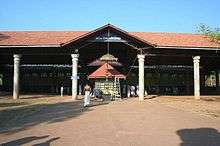 Sree Rajarajeshwara Temple
Sree Rajarajeshwara Temple Trichambaram Sree Krishna Temple
Trichambaram Sree Krishna Temple Juma Masjid
Juma Masjid.jpg) Taliparamba Shivasundaran
Taliparamba Shivasundaran Skyview Taliparamba town
Skyview Taliparamba town
Karimbam farm
The District Agricultural Farm at Karimbam is a major research organization in Taliparamba. The farm was originally established in 1905 by Sir Charles Alfred Barber at the behest of the Madras Government, based on the recommendation of the Famine Commission of 1880 of the Government of India. Although the objective was to do research on pepper, the activities of the farm were further extended to agroclimatic experiments, hybridization and the production and distribution of seeds and seedlings. Covering an area of 56 hectares, the farm has a rich biodiversity with a variety of indigenous and exotic fruit trees, such as Mangosteen, Rambutan, and Durian.
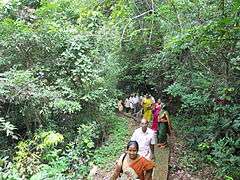 Forest footpath
Forest footpath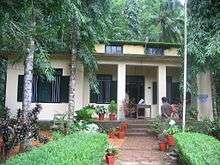 Farm Office
Farm Office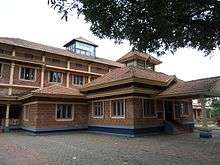 I.T.K.Center
I.T.K.Center
References
- Peel, M. C.; Finlayson B. L. & McMahon, T. A. (2007). "Updated world map of the Köppen–Geiger climate classification". Hydrol. Earth Syst. Sci. 11 (5): 1633–1644. Bibcode:2007HESS...11.1633P. doi:10.5194/hess-11-1633-2007. ISSN 1027-5606. (direct: Final Revised Paper)
- Falling Rain Genomics, Inc - Taliparamba
- http://taliparambamunicipality.in
- http://www.elections.in/kerala/assembly-constituencies/taliparamba.html
- "Assembly Constituencies - Corresponding Districts and Parliamentary Constituencies" (PDF). Kerala. Election Commission of India. Archived from the original (PDF) on 4 March 2009. Retrieved 18 October 2008.
External links
| Wikimedia Commons has media related to Taliparamba. |

- Map